
Do you have a question about the Toshiba 32HL57 and is the answer not in the manual?
Crucial safety warnings related to fire, shock, mounting, and proper handling.
Advice on securing TVs to furniture to prevent tip-overs and ensure child safety.
Comprehensive instructions for safe operation, installation, and precautions against electrical and physical hazards.
Instructions for safely cleaning the TV screen and cabinet, and basic maintenance.
Guidance on when to seek professional service and safety warnings related to repair.
Steps and precautions for setting up the TV using the included pedestal stand.
Instructions for wall mounting the TV, including using appropriate brackets.
Step-by-step guide on how to detach the TV's pedestal stand.
Explains common LCD display limitations like afterimages and pixel variations.
Welcome message, manual scope, and overview of TV features and setup steps.
Identification and function of controls on the front and side panels of the TV.
Diagram and description of the various input/output terminals on the back of the TV.
Description of various cables used for connecting audio/video devices to the TV.
Instructions for connecting an antenna or cable TV service to the TV for basic channel reception.
Guide for connecting a VCR to the TV along with antenna or cable TV input.
Instructions for connecting a VCR using S-Video for better picture quality with a cable box.
How to connect multiple devices like DVD players, VCRs, and satellite receivers using component video.
Steps for connecting a camcorder to the TV using A/V or S-Video inputs.
Instructions for connecting an external audio system to the TV for enhanced sound.
Guide for connecting devices via HDMI or DVI to the TV's HDMI input for digital audio/video.
Instructions for connecting a PC to the TV via PC IN or HDMI for display and sound.
Instructions for installing batteries and understanding the remote's basic operation.
Explanation of the functions of various buttons on the TV remote control.
How to use the TV remote to control other devices like VCRs, DVD players, and cable boxes.
A chart detailing the functions of remote control keys in different device modes.
Steps to program the TV remote to operate other brand devices using codes.
Visual guide to the TV's on-screen menu structure and icons.
How to use the remote or control panel buttons to navigate and select menu options.
How to choose the on-screen display language for menus and messages.
Steps to automatically scan and store available TV channels into memory.
How to manually add or remove channels from the TV's channel memory.
Guide to preset and tune favorite channels for quick access.
How to assign custom labels to channels for easier identification.
Options for configuring HDMI audio input and troubleshooting sound issues.
How to choose which connected device's signal to view on the TV.
How to assign custom names to the TV's input sources for clarity.
Methods for tuning to channels, including favorite and programmed channels.
Options for adjusting the aspect ratio and size of the displayed picture.
Visual examples of different picture size settings and their effects on the image.
How to fine-tune the horizontal and vertical placement of the picture.
How to enable automatic picture size adjustment based on signal input.
How to display a blue screen instead of static when no signal is received.
How to set the TV to Cinema mode for smoother motion with DVD playback.
How to select picture modes like Sports, Standard, Movie, or Preference.
How to fine-tune settings like brightness, contrast, color, and sharpness.
How to use the black stretch feature to improve contrast balance in picture dark areas.
How to reduce visible interference caused by MPEG compression.
How to use digital noise reduction to improve picture clarity for weak signals.
How to adjust the picture's color tone using Cool, Medium, or Warm presets.
How to enable or disable closed captions and text display for programs.
How to improve the clarity of closed captions in weak signal conditions.
How to mute the TV's sound or use half-mute function.
How to select stereo or secondary audio program (SAP) broadcasts.
How to adjust bass, treble, and balance for optimal audio output.
How to activate SRS WOW™ technology for enhanced surround sound experience.
How to limit volume fluctuations between different sources or commercials.
How to set or enter a PIN code to access Channel Lock and Video Lock features.
Steps to change the existing PIN code or reset it if forgotten.
How to lock specific channels to prevent unauthorized viewing.
How to lock specific video input sources or channels.
How to adjust picture settings when connecting a PC to the TV.
How to configure audio output for PC or HDMI connections.
How to set the TV to automatically turn off after a specified time.
How to set the TV to automatically turn on at a scheduled time.
How to view current TV settings like channel, timer, and picture size using the RECALL button.
Information about the TV's automatic power-off function for vacant channels.
How the TV remembers the last used mode after a power interruption.
Solutions for common issues like no picture, poor reception, or incorrect display.
Tips to reduce visual noise and interference on the TV screen.
Troubleshooting steps for color display issues and adjusting tint/color settings.
Addressing instances where audio and video are not synchronized.
Solutions for issues with the remote control's functionality or battery life.
Troubleshooting steps for issues related to tuning or accessing channels.
Solutions for problems with closed caption display or text availability.
Technical details of the TV, including dimensions, power, and input/output specifications.
Technical specifications for HDMI and PC input formats and pinouts.
Details of the warranty coverage for Toshiba televisions purchased in Canada.
Explains warranty limitations, remedies, and dispute resolution procedures.

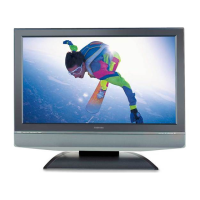

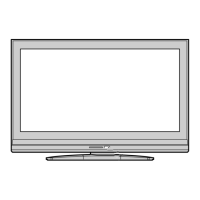


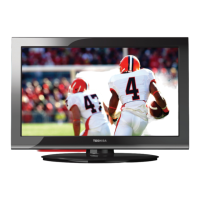
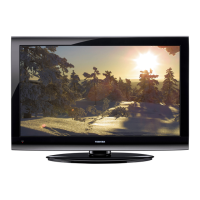
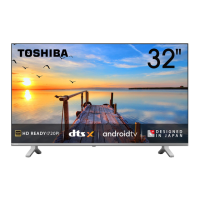
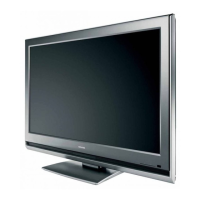
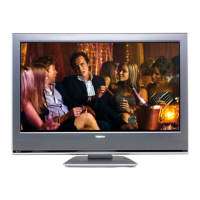

